
Thelocactus hastifer is a species of plant in the family Cactaceae. It is endemic to Mexico. Its natural habitat is hot deserts.

Turbinicarpus pseudopectinatus is a species of plant in the family Cactaceae.

Uebelmannia gummifera is a species of plant in the family Cactaceae. It is endemic to Brazil. Its natural habitat is dry savanna. It is threatened by habitat loss.
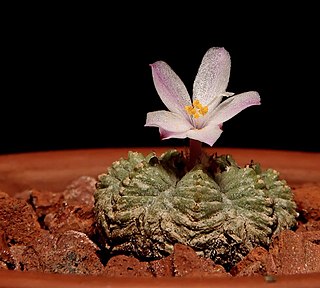
Aztekium ritteri is a species of cactus native to the Mexican state of Nuevo León.

Echinocereus stramineus is a species of cactus, with stramineus meaning made of straw. There are various common names such as strawberry cactus, porcupine hedgehog cactus, straw-color hedgehog, and pitaya. The straw-colored spines distinguishes this particular plant from other Echinocereus. The aged spines may turn white in color and are very fragile.

Echinocereus poselgeri, also known as the dahlia cactus, is a species of Echinocereus. It is native to Coahuila and southern Texas.

Echinocereus berlandieri is a species of hedgehog cactus. Its range includes most of South Texas, and is commonly found along the Nueces River and the lower Rio Grande.

Cochemiea conoidea, common name Texas cone cactus or Chihuahuan beehive, is a species of cactus native to southern United States to central Mexico.

Cleistocactus morawetzianus is a species of columnar cactus in the genus Cleistocactus, endemic to Peru.

Thelocactus tulensis is a species of cactus. It is endemic to Mexico.

Echinocereus bonkerae, also known as pinkflower hedgehog cactus, Bonker hedgehog, or short spined strawberry cactus, is a species of hedgehog cactus.

Arthrocereus spinosissimus is a species of cactus in the subfamily Cactoideae from Brazil.

Oreocereus trollii, commonly known as the Old Man of the Andes cactus, is a species of cacti native to Argentina and Bolivia. Though listed as Least Concern by the IUCN, the plant is collected extensively, and in some areas is threatened.

Echinocereus scheeri is a species of hedgehog cactus in the family Cactaceae, native to northern Mexico. With its dramatic offsets, it has gained the Royal Horticultural Society's Award of Garden Merit.
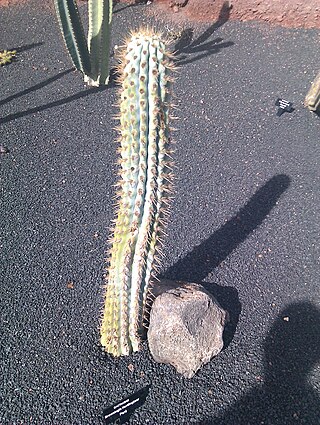
Browningia hertlingiana is a species of Browningia found in Peru.

Weberbauerocereus albus is a species of Weberbauerocereus from Peru.

Weberbauerocereus winterianus is a species of Weberbauerocereus from Peru.
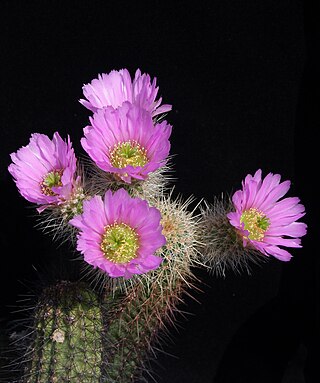
Echinocereus spinigemmatus is a species of cactus native to Mexico.
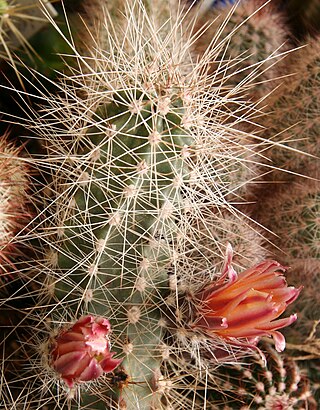
Echinocereus mapimiensis is a species of cactus native to Mexico.
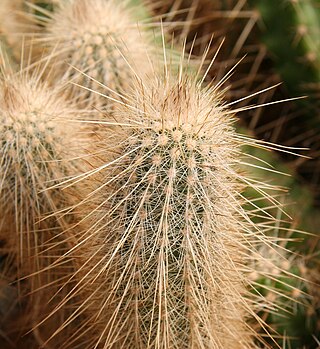
Echinocereus rayonesensis is a species of cactus native to Mexico.

























